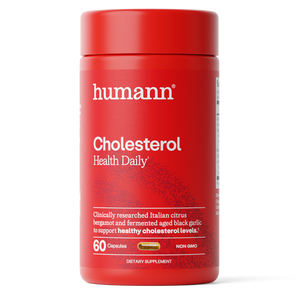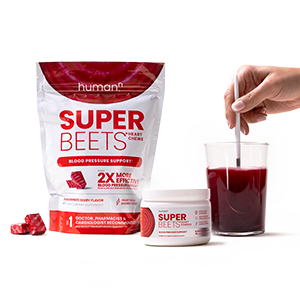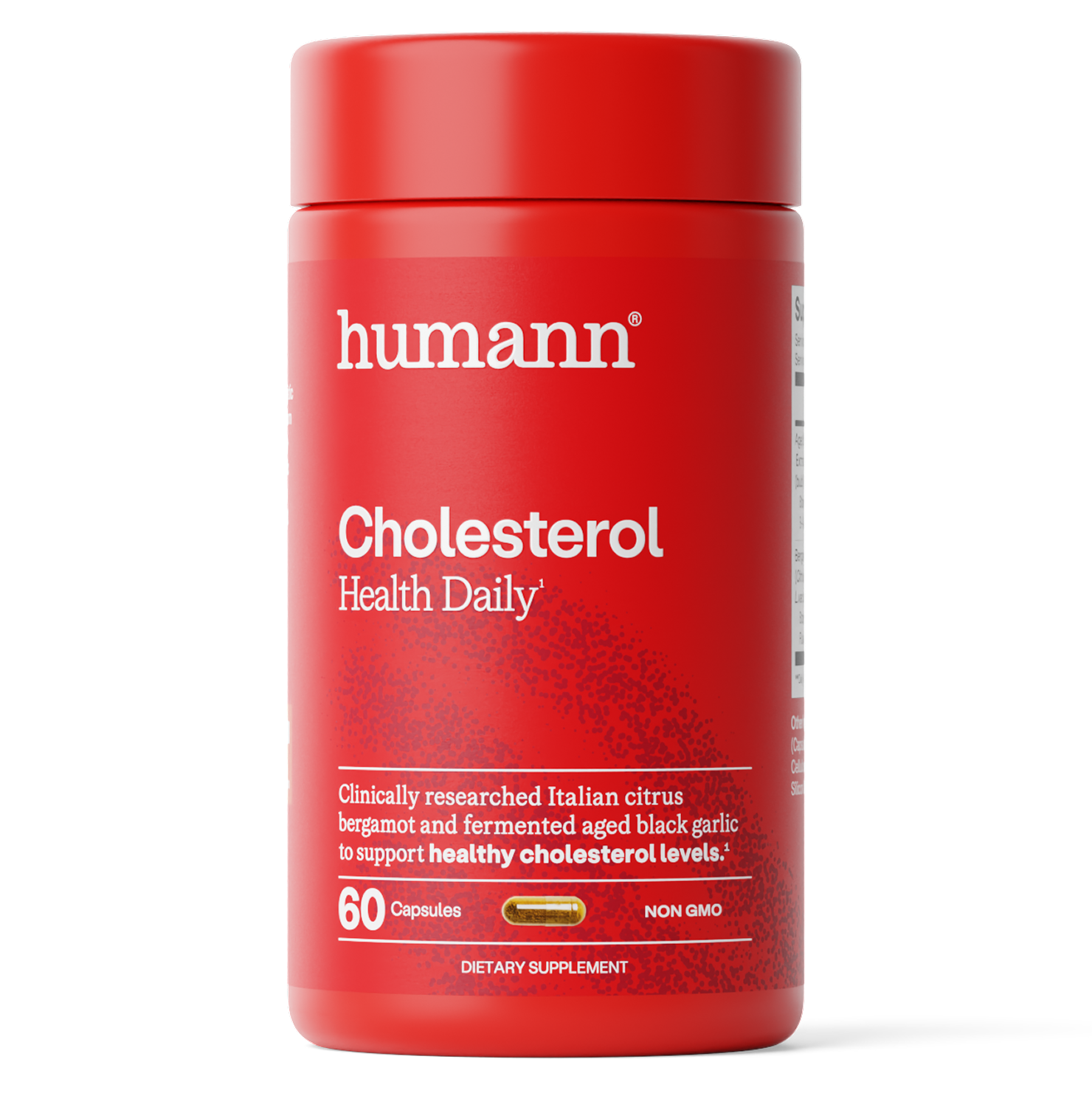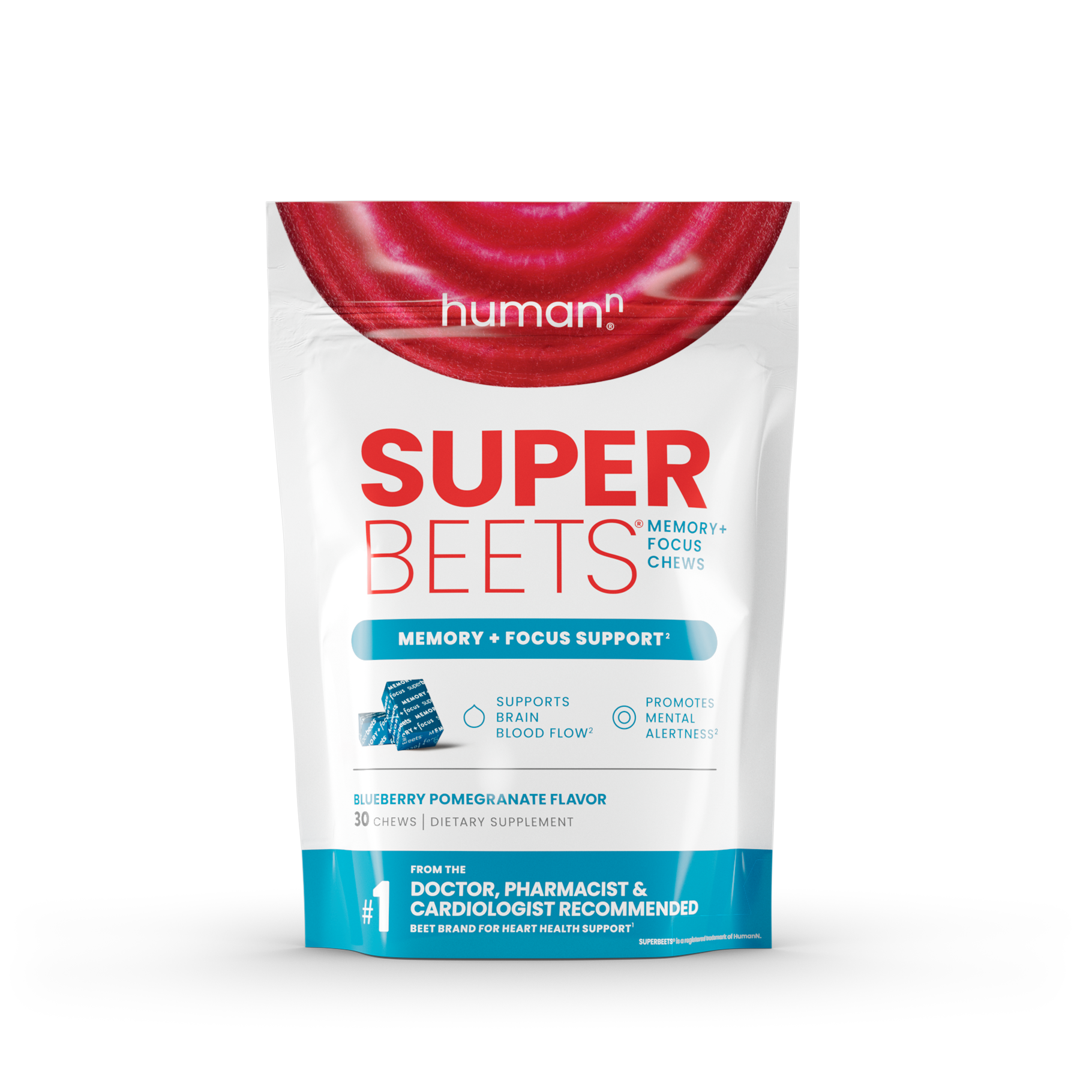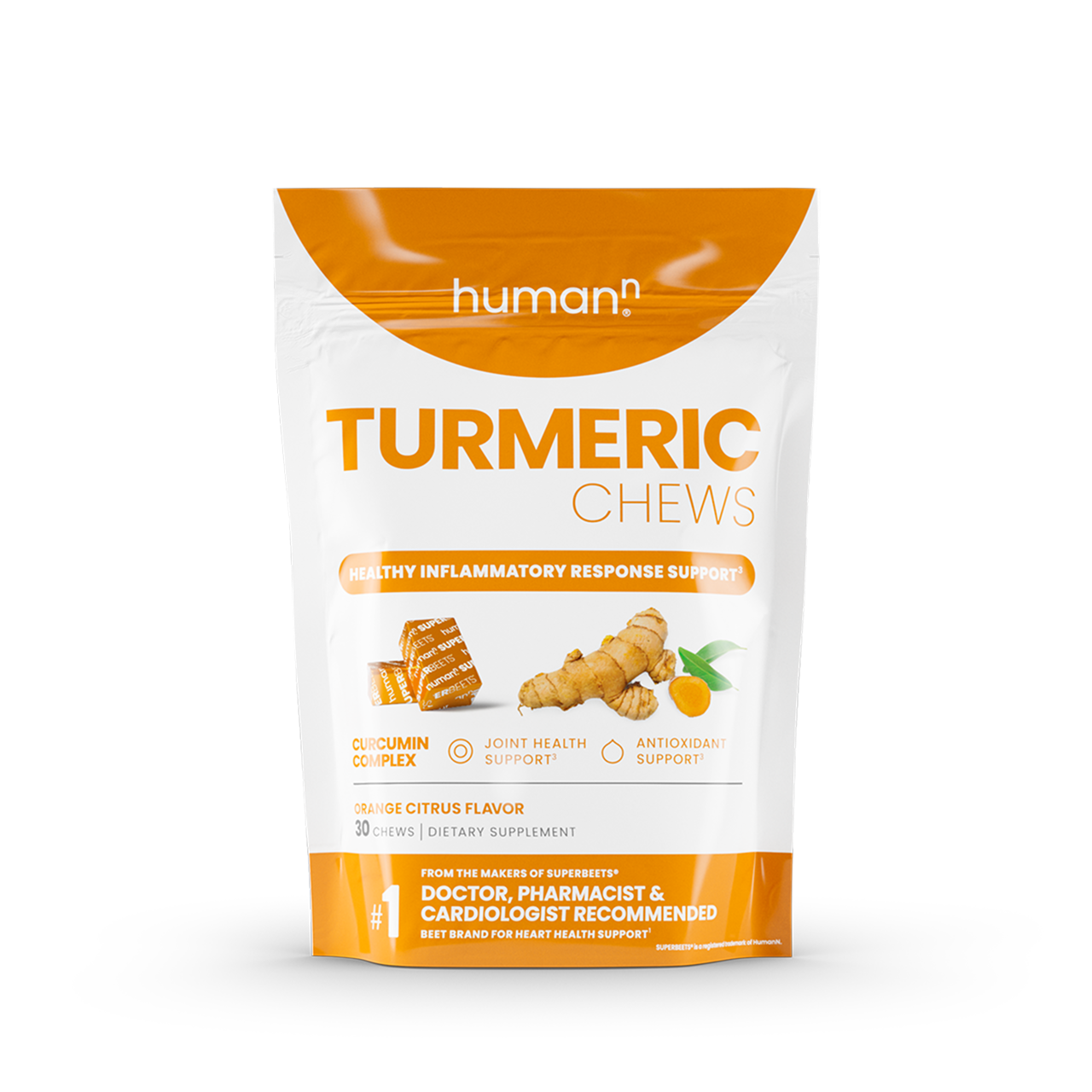You’ve no doubt heard that your metabolism peaks at a young age and that it can decline significantly in your older years. But there’s much more to know about the role metabolism plays in human health beyond it “being fast or slow” — starting with how our metabolism functions to provide energy for our body’s vital processes and how metabolic abnormalities can trigger inflammation and increase your chances of serious health problems, from diabetes to heart disease. Consequently, as the discussion around metabolic health evolves, so does the importance of understanding the impact uric acid and a promising superfood, tart cherry, have on your inflammatory response.
To get to the bottom of the metabolism puzzle, we sat down with Danny Petrasek, M.D., Ph.D., a renowned endocrinologist. Dr. Petrasek’s research focuses on metabolism and diabetes, and preventing, diagnosing, and treating diseases related to hormone imbalance. A key area of Dr. Petrasek’s interest centers on how uric acid is related to Metabolic Syndrome — a condition that impacts 1 in 3 Americans.

Dr. Danny Petrasek, M.D., Ph.D.
Uric acid is a natural byproduct created when you break down substances called purines. Uric acid levels increase when consuming large amounts of purines or foods that contain purines, such as beer, red meat, and seafood, and indirectly rise from consuming high sugar foods and beverages. Too much uric acid build-up in the body can lead to a painful inflammatory condition called gout, as well as increase your risk of having adverse metabolic outcomes.
There is some good news though -- and that’s the uric acid-modulating role of one fruit in particular: tart cherry. Tart cherries have historically been used as a natural treatment for gout, but very recently – their impact on metabolic health is emerging as a point of emphasis in the medical community.
We recently spoke with Dr. Petrasek about the growing impact of Metabolic Syndrome, and how we might eat our way to better metabolic health by lowering uric acid levels.
Why Metabolism Matters

Can you describe your research for someone who is not familiar with it?
I first trained as a medical doctor in internal medicine with a sub-specialty in endocrinology, which is the study of hormones — diabetes, pituitary hormones, sleep, metabolism, and high blood pressure. During that time, I also engaged in endocrine physiology research, in addition to my clinical specialty. For reasons that I can explain another time, I was motivated to pursue a separate doctorate in applied computational mathematics at Caltech. There, I created mathematical and computational models, as is done in the physical sciences, that are predictive and try to uncover the rules of physiology.
So, I’ve spent a good amount of time in translational science, which essentially means I've focused on using basic scientific concepts and attempting to make an impact clinically: thus improving our understanding of health and healthy outcomes.
What exactly is metabolism?
Metabolism is the conversion of nutrients, from what we eat or drink, into energy. The body has a way of taking those nutrients and transforming them into both immediate energy and stored energy.
As you can imagine, we need energy for everything from every cellular process and signaling to macro functions like breathing, heartbeat, liver functions, and so forth.
Let's go a level deeper: How would you define metabolic health?
That's tricky because, even if we get rid of the word “metabolic,” what does it mean to be healthy? There's no good definition of “healthy.” The practical and usable definition of health is the absence of disease. When we've decided that people have no detectable disease, we call them “healthy.” Metabolic health means basically the same thing: there's no detectable signs of abnormalities or pathologies in terms of the conversion of nutrients into energy.
Can you explain the link between metabolism and inflammation?
Inflammation by itself is the state in which the body reacts to an injury or insult. Whenever we have an injury, there's an inflammatory response — whether it's a blunt injury, an injury to the connective tissue, an immune attack, or an infection. When there's any injury to the body, the body has only a couple of different responses and one of them is inflammation. Inflammation is involved in every process that involves an injury and repair mechanism in the body. It’s integral to the repair needed to get you back to a “healthy state.”
Inflammation is connected to metabolism in the sense that it's probably the underlying factor that relates to metabolic health.
Now that we have some clarity around metabolism and compromised metabolic health, it seems like a great time to talk about Metabolic Syndrome.
Yes, traditionally we’ve measured metabolic health in a specific way, and that led us to the term "Metabolic Syndrome." There are two points related to the explanation for Metabolic Syndrome. First, there's the historical development of Metabolic Syndrome, and then there's the astonishing biological origin of Metabolic Syndrome, which has recently been uncovered in the last 10 to 15 years.
Exciting! Let’s start with its history.
Sure. In the 1940s, when Franklin D. Roosevelt was president, he died of what's called malignant hypertension. He had extremely high blood pressure. At the time, high blood pressure was thought to be a part of the natural aging process. But his blood pressure was so high that he died of a massive stroke. At that point, people understood that even though he was probably the most important patient in the United States at the time, we didn't have a good understanding of the risk factors of these cardiovascular events.
So, the well-known Framingham Study was initiated. Harvard Medical School was appointed to run the study in Framingham, a town in Massachusetts — picked because it was Average Town, USA. The study started in 1948 with the idea of "let's take everybody in this town from zero to 100, give them biannual exams and measure every kind of blood test."
Within 5-10 years, the researchers found correlations among markers that led to heart disease. Those were smoking, diabetes, high blood pressure, high lipids, and obesity — all linked to a high risk of cardiovascular disease. Immediately, the recommendation was high blood pressure should be controlled. Same with high lipids. Basically, all the treatment recommendations were based on those correlations: control your blood pressure, control your diabetes, control your weight, and stop smoking.
So, the researchers defined Metabolic Syndrome based on that set of risk factors?
That came later. Thirty years later, Stanford University endocrinologist Gerald Reaven gave a lecture at the Annual Diabetes Meeting where he noted that the risk factors for heart disease — diabetes, high blood pressure, cholesterol, and obesity — often reside in a single person. Often, patients had three or four of those risk factors at the same time. And he coined it Metabolic Syndrome. If someone had three out of those five risk factors, they had Metabolic Syndrome. And if you had one or two risk factors, you didn't have full Metabolic Syndrome, but you had some metabolic issues.
From there, Metabolic Syndrome has been clinically defined as having three or more risk factors for heart disease. Now, that's a very cardio-centric definition. Being metabolically unhealthy also means that you need energy — not just for your cardiovascular system— but also for your immune system, liver, bones, muscles, and brain. However, those things are not easily measured. You can't just take a blood pressure cuff and measure your immunity or take a finger stick and measure your brain health. So, while the term metabolically healthy came to be publicly understood as cardio centric, it's really all the other things too.
During the Covid pandemic It became very widely understood that if you had Metabolic Syndrome or pre-diabetes, or you were overweight, you also had risk factors for immune health. While we have a measure of metabolic health, it doesn't directly explain that immunity correlates with it. It does signal to us that there's an inefficiency between the conversion of nutrients into energy in the body.
The Rise of Sugar Intake—and Metabolic Syndrome
What can you tell us about the origin story of Metabolic Syndrome?
Today Metabolic Syndrome occurs in one in three people in the United States. During the 1970s and 80s, it was appreciated that there was a huge increase in the rate of diabetes. At the turn of the century, around 1% or less of the population had diabetes. But by the 1990s and 2000s, probably 12 to 15% of the population had it. There was also a huge parallel increase in obesity rates from the 1940s and 50s to the 1990s.

At First, medical scientists thought maybe it was our fat intake. But it turns out that there was no relationship between fat intake and obesity. Evidence eventually pointed to high fructose corn syrup, which is basically sugar. Table sugar or sucrose is made up of glucose and fructose. When we introduced high fructose corn syrup into our diet, we had an acceleration in the obesity epidemic. The reason high fructose corn syrup was introduced was nothing more than an economic play: it was a cheaper way of sweetening foods. So, it appears there is a relationship between high fructose corn syrup and obesity, and that turns out to be a key connection to uric acid.
Uric acid is a molecule that many of us non-scientists are just beginning to understand. Can you explain the link between uric acid and metabolic health?
Yes. First, it’s important to note that among mammals, we have the highest uric acid levels in the whole mammalian kingdom. Our levels are as much as 10 times higher than other mammals.
Why is that?
15 million years ago, during the Miocene Period, our biological ancestors had the same uric acid levels as other mammals. We were basically primates at the time. During that period, our ancestors ate mostly fruit — 95 to 99% of their diet was fruit. And remember, fruit has fructose.
During that period, 15 million years ago, there was climate change known as the Miocene global cooling period. Because of that change, many of the fruit trees died off, which meant that many of our primate ancestors died off too because they didn't have enough food. But then, a remarkable thing happened that permitted the survival of our species.
Stepping back a bit — Adenosine triphosphate (ATP) is the universal molecule of energy for all living things, and eventually as we use up the energy, it gets converted to uric acid. And then it gets converted from uric acid to a compound called allantoin by an enzyme called uricase which breaks up the uric acid.
A mutation occurred, resulting in the loss of the functioning gene that codes the enzyme uricase. This is the reason humans have such high uric acid levels.
The resulting high uric acid levels led to an astonishing change: we could store fat really easily. When we ate the resulting high uric acid levels permitted easier storage of fat which could be converted to energy during starvation. Thus, primates that had the mutation could live without food for 30 days. Excess food they foraged and ate stored as fat and that permitted our species survival.
But what worked for us then, now works against us.
How Uric Acid Levels Helped Us Survive
Uric acid helped to make us efficient storers of fat?
Correct. But if you fast forward to 15 million years later, we're eating three times a day and consuming excessive quantities of high fructose corn syrup. That's likely contributing to the obesity epidemic.
When you have a fatty liver, that induces an inflammatory response. Then that inflammatory response makes it more likely to develop diabetes because of a condition called insulin resistance. Essentially, insulin is a molecule that helps put glucose into cells. When you have insulin resistance, you need extra amounts of insulin to move nutrients into cells. With insulin resistance, you develop comorbidities including high cholesterol, high blood pressure, and diabetes. Thus, you have this whole cascade of things, which defines Metabolic Syndrome.
Along with Metabolic Syndrome, high uric acid levels often results in gout. Can you speak on the prevalence of gout and how it relates to metabolic health?
Yes, gout is a disease of high uric acid. What’s interesting is that Native peoples have the highest rates of gout in the world. They also have the highest rates of Metabolic Syndrome. For instance, the Maori of New Zealand, which are the native people — 80% of their population — have Metabolic Syndrome. Interestingly, they also have the highest rates of gout in the world, implying high uric acid levels. Generally, native populations experience a 50% Metabolic Syndrome rate, and rates are also high for the Native American populations of Central and South America.
Why are gout rates so high among these Native populations?
Well, think about the Polynesians. The Polynesians were a people that populated islands across the Pacific. For them to populate these islands in primitive times, they had to canoe from island to island, and they might have had to go weeks without food. The Polynesians that survived were the ones that likely had high uric acid levels.
There was an amazing study conducted in Japan which pointed this out very clearly. A UCLA colleague of mine conducted a study where he took about 487 middle-aged Japanese males who were non-obese and with no blood pressure problems, no diabetes, and very similar family environments and work habits. The research team followed them, and after five years, found that 87 of them gained about 20 pounds or more. The only difference between those 87 and the other 400 was that the 87 males were destined to gain weight — they all had uric acids of 5.5 and above. So that means that the uric acid actually predicted that they would gain weight and develop diabetes and high blood pressure.
Is a 5.5 uric acid level considered abnormally high?
Here's the remarkable thing: A 5.5 uric acid level is considered in the normal range, because we never associated uric acid with these problems. We say that a level greater than 6.5 is high because the likelihood of developing gout is increased. However, having a uric acid of 5.5 increases the likelihood of gaining weight. That is now beginning to disseminate into the medical community.
Have other studies demonstrated the connection between markers for Metabolic Syndrome and uric acid levels?
Yes, many. The journal Nature recently published an article that showed a similar conclusion: Having uric acid levels of 5.5 and above predicts the development of high blood pressure, diabetes, cholesterol, and obesity. The levels were shown to be actually predictive.
Is measuring a person's uric acid levels a better predictor of Metabolic Syndrome than clinical symptoms?
It surely seems to be because you have high uric acid levels before you develop blood pressure problems, diabetes, and so forth.
Other studies show that if you block the conversion of uric acid with a drug called allopurinol, which is used to treat gout, you improve high blood pressure and cholesterol. Blocking uric acid has also been shown to increase energy. Using functional MRI, researchers show that you can increase the ATP in the liver and the heart when you block the conversion into uric acid with allopurinol. When you block the conversion of uric acid, you recycle the ATP through a pathway called the salvage pathway. And that's where you get more energy. On the other hand, having high uric acid levels causes you to waste energy.
The Power of Tart Cherry on Healthy Uric Acid Levels

Can you further explain the connection between certain foods we eat, particularly sugary foods, and higher uric acid levels — and therefore lower energy levels?
In your cells, when there’s excess glucose, there's biochemical feedback that says, "Don't convert any more glucose into energy. Use it to store glycogen (which is a sugar molecule that's for storage)."
Remember, ATP is the energy molecule. When you eat glucose, you convert glucose into ATP. When you burn sugar (which contains fructose) into ATP, the feedback does not occur. Basically, you're using more and more ATP without any healthy feedback. This process creates excess uric acid. Therefore, the more fructose you eat, the more uric acid you create.
If you eat a lot of sugar, which is fructose and glucose, you're producing excess amounts of uric acid. That may be contributing to the obesity epidemic. All the sugary drinks with high fructose corn syrup produce high amounts of intracellular uric acid, which leads to fatty liver, leading to insulin resistance, diabetes, high blood pressure, and cholesterol problems. That's the connection.
Besides sugar, other foods that increase uric acid include beer, shrimp, and organ meats.
You mentioned the drug allopurinol, which reduces uric acid. Are there other interventions that have been shown to successfully reduce uric acid?
It turns out that tart cherries are about 25% as effective as allopurinol, milligram per milligram. This was not discovered by accident. In the 1950s, an article was published by a physician (rheumatologist) who followed people who had gout. He found that patients who consumed large amounts of tart cherries had fewer gout symptoms than those who did not.
So, tart cherries, and a particular kind of tart cherry — the Montmorency tart cherry — is one is the most potent cherry species that blocks the xanthine oxidase enzyme, which is exactly what allopurinol does. Tart cherries basically provide more energy to the body. So, in that way, tart cherries are actually an energy supplement. They recycle molecules to make ATP.
There have been a few studies that showed that tart cherries also improve Metabolic Syndrome. The cherries work exactly the same way as allopurinol. The additional benefit of tart cherries though is that not only do they work like allopurinol, they work similarly to aspirin, meaning they block an inflammatory enzyme called cyclooxygenase. In that way, tart cherries also help with inflammation in the joints, in addition to blocking conversion into uric acid.
In addition to adding tart cherries to your diet, are there other lifestyle changes you recommend?
Lowering stress is one recommendation, because the balance between prooxidants and antioxidants has to do with your stress levels. Those are all injury molecules, and injury causes inflammation. When there's inflammation, you're metabolically less efficient. Exercise is another intervention because it stimulates a molecule called AMPK, known as the metabolic master switch which turns off fat storage and turns on fat burning.
The Future Impact of Metabolic Syndrome
What does it look like to be metabolically healthy? For instance, are you metabolically healthy if you have no markers for Metabolic Syndrome?
Again, this has been a lifelong issue for me: How do you define health? It's like the question, why do we age? What we consider to be healthy is no detectable diseases until 30 seconds before you die. But most people have some sort of pathology on the way. So, we don't have good definitions of “health.” What we do have are generally accepted markers of health.
The problem with medicine is that it's not personalized; it's statistically oriented. I'll give you an example. If I told you that normal height is somewhere between 4'11 and 6'11, less than that is abnormal and greater than that is abnormal. If I'm from Mars and I visit Earth, and I measure a young woman on a Monday and she's 5'8, that's normal height. On Tuesday, she's 6'8. That's also normal.
That's exactly what we do with blood tests. We take a blood test and we say, "Oh, you're in the normal range. You're fine." That has nothing to do with your personal normal. The relationship between all the blood markers in your body and all the blood pressures and all the things that we know how to measure are unique and balanced.
Right now, the tools that we have to measure health are very primitive. Medicine is both a sophisticated and primitive science.
Is there research to suggest we're getting closer to more precise medicine in terms of measuring metabolic health?
I think it's being driven in that direction, but there needs to be a culture change. There was a deviation between medical science and physical science in the 19th century. People who are medically educated don't get trained the same way.
The solution must involve more scientists with physical science training, moving into medicine and making it more predictive. It's happening slowly.
What do you see as the future impact of Metabolic Syndrome and human health in general?
In terms of the Metabolic Syndrome epidemic, which affects 1 in 3 people in westernized countries, there’s more of an awareness today. Evidence points to certain culprits, including high fructose corn syrup. Controlling uric acid and controlling the way we eat — there's no reason why we need to eat three meals a day. We should probably be eating smaller amounts throughout the day and intermittent fasting.
We've evolved to produce high amounts of uric acid because, during famine, it helped us survive. But we no longer need to evolve for famine because we have plenty of food. Now we have to adjust our solution to our new environment.
Humans have not had to adapt very much because we have a larger brain. Birds, for example, adapt — they fly south for the winter. Humans don't fly south in the winter; we buy fur coats and build homes with heaters. We create things to change our environment rather than evolutionary change. And part of our environment is our nutritional environment.
As Metabolic Syndrome continues to increase in the population, the medical community will direct more and more attention to coming up with solutions that lead to better metabolic health outcomes. Uric acid is really just the beginning, a very important one at that.

